List of Michigan Milkweeds
Michigan Milkweed Species to Include in your Butterfly Garden
There are twelve species of Michigan milkweeds (Asclepias spp.) that can be grown for Monarch Butterflies and other insects. Milkweeds are an important host species for Monarch, Queen, and Soldier Butterflies. The Monarch butterfly in particular uses the cardenolides found in the milky sap of milkweeds to give an unpleasant taste to predators. These plants are also an important nectar source to all insects visiting your pollinator garden. Michigan is divided into the lower and upper peninsulas by Lakes Michigan and Huron. For purposes of clarity, distributions are given using these peninsulas.
1. Clasping Milkweed (Asclepias amplexicaulis), a Milkweed for Dry Soils
Clasping Milkweed (Asclepias amplexicaulis): Clasping milkweed is native to the western and south-central counties of the lower peninsula of Michigan (Kartesz 2015). In the wild, clasping milkweed grows in dry woodlands, prairies, meadows, and roadsides that have sandy or gravelly soil. Growing up to 3 feet tall, this milkweed has greenish-pink, red-, brown, to purple flowers that bloom from March to September.
In your Michigan butterfly garden, this milkweed is hardy in zones 3-9 and requires full sun to partial shade having dry sandy/rocky soil. Seeds of clasping milkweed can be purchased in the McMullen House Bed & Breakfast Garden Shop.
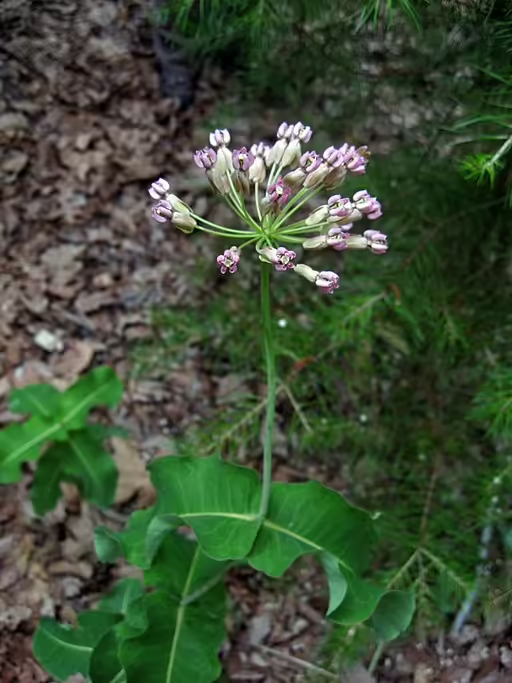
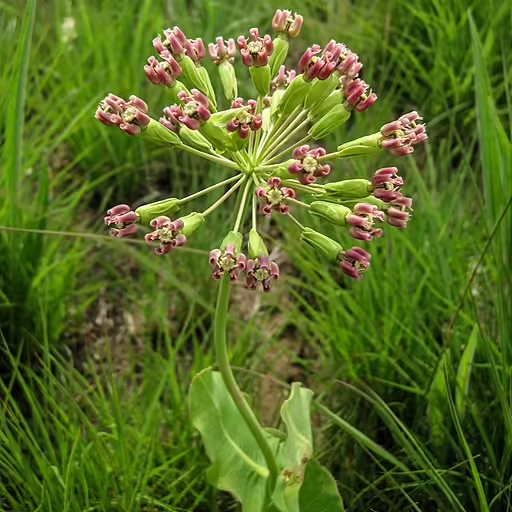

2. Poke Milkweed (Asclepias exaltata), a Milkweed for Shade and Moist Soils
Poke Milkweed (Ascelpias exaltata): Poke milkweed is native in both the lower and upper peninsulas of Michigan (Kartesz 2015). In the wild, poke milkweed grows in moist woods, roadsides, and edges of woods. Reaching a height of 2 to 6 feet, it is one of the taller milkweeds in Michigan and has flowers that are white to green with accents of rose, purple, or blue. The flowers bloom from May to August.
In your Michigan butterfly garden, this milkweed is hardy in zones 3-9 and requires part-shade to full shade in moist soil. For shade gardens, this is a choice milkweed. Seeds of poke milkweed can be purchased in the McMullen House Bed & Breakfast Garden Shop.


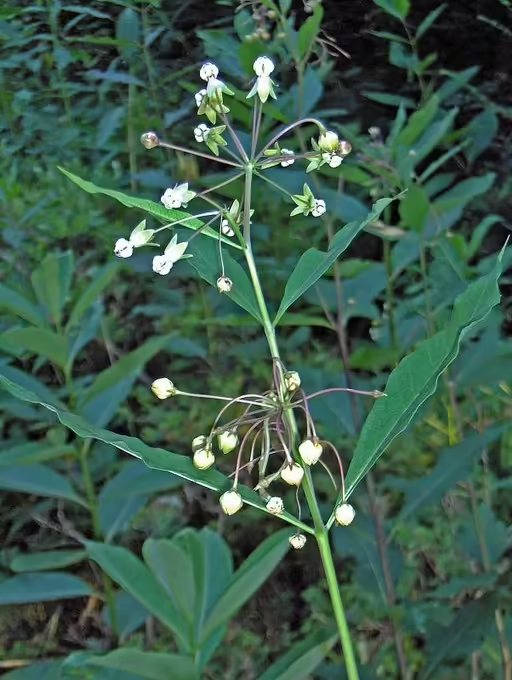
3. Swamp Milkweed (Asclepias incarnata), a Milkweed for Moist Soils
Swamp Milkweed (Asclepias incarnata): Swamp milkweed has two subspecies, ssp. incarnata and ssp. pulchra. The former is native throughout Michigan (hardy in zones 3-9), while the latter is native to one county in Michigan in the northeastern lower peninsula (Kartesz 2015). Like the name suggests this plant is found in wet places such as the shores of streams, lakes, ponds, and other wetlands. However, as a landscape plant it can exist in drier places. Growing from 3 to 5 feet tall, the flowers are variable and are generally a pink to red color, but there is also a white cultivar (pictured below).
In your Michigan butterfly garden, swamp milkweed requires full sun to part-shade and prefers moist to medium moisture soil, but can exist in drier soil. Seeds of swamp milkweed can be purchased in the McMullen House Bed & Breakfast Garden Shop.
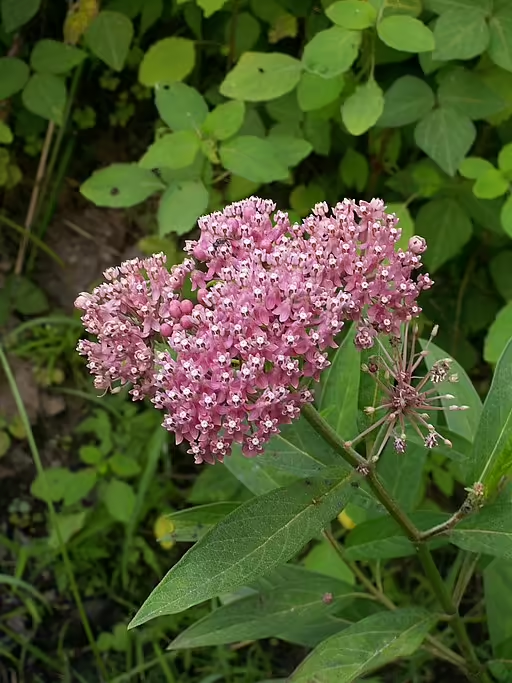

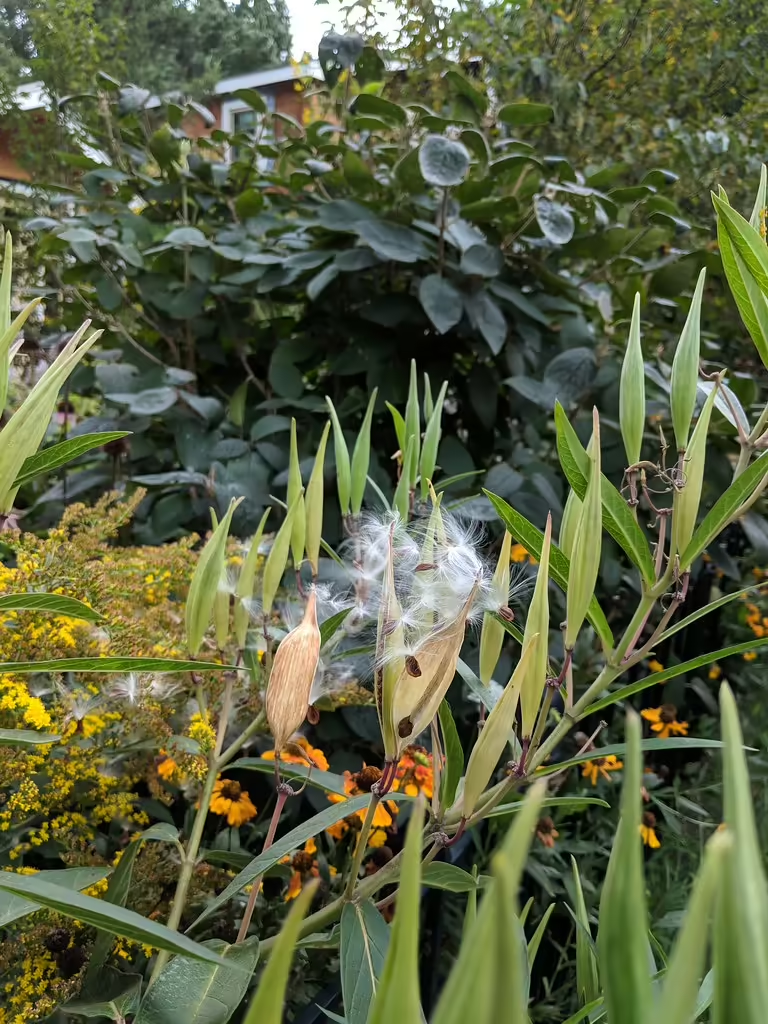
4. Long-leaf Milkweed (Asclepias longifolia), a Milkweed for Moist Soils
Long-leaf Milkweed (Asclepias longifolia): Long-leaf milkweed has two varieties, var. hirtella and var. longifolia. Of these var. hirtella is rare and occurs in scattered counties in the lower peninsula (Kartesz 2015). The other variety is not located in Michigan. In the wild, long-leaf milkweed grows in moist areas and wetlands such as bogs, swamps, flatwoods, and prairies having full sun. Reaching a height of 1 to 2.5 feet tall, the greenish-white flowers bloom from April to July.
In your Michigan butterfly garden, this milkweed is hardy in zones 4-9 and requires full sun and needs moist to wet soils.
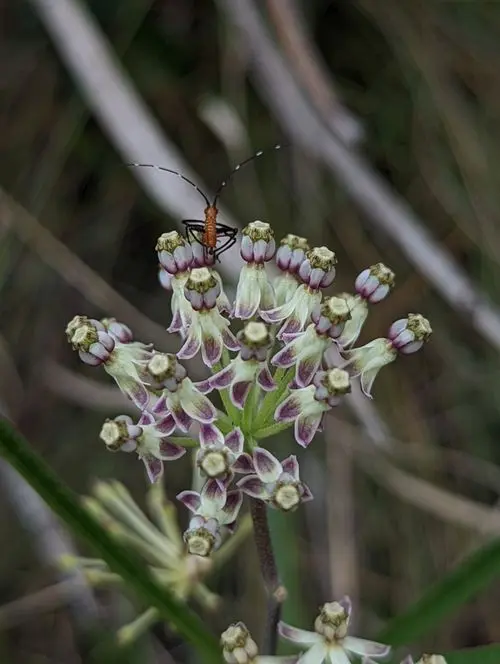


5. Oval-leaf Milkweed (Asclepias ovalifolia), a Milkweed for well-drained High pH Soil
Oval-leaf Milkweed (Asclepias ovalifolia): Oval-leaf milkweed is native and rare in one county (Menominee County) in the upper peninsula of Michigan (Kartesz 2015). Oval-leaf milkweed grows in open areas having full sun or partial shade such as prairies, grasslands, savannas, railroad edges, and alluvial terraces. The white, pink, or green flowers bloom from May to August.
In your Michigan butterfly garden, this milkweed is hardy in zones 5-9, requires full sun to part-shade and well-drained high pH soil. Seeds of oval-leaf milkweed can be purchased in the McMullen House Bed & Breakfast Garden Shop.
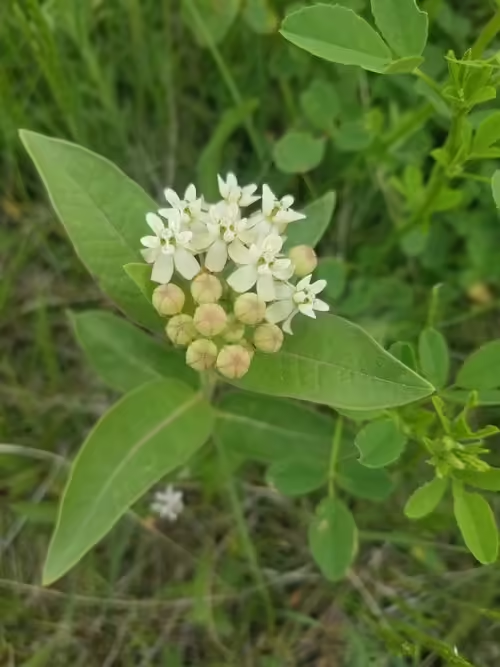


6. Purple Milkweed (Asclepias purpurascens), a Milkweed for Moist Soils
Purple Milkweed (Asclepias purpurascens): Purple milkweed is native and rare in the south-central and central parts of the lower peninsula of Michigan (Kartesz 2015). This plant grows in moist to dry places having full sun to part shade such as swamps, woodlands, meadows, roadsides, and dry fields. The purple to pink flowers bloom from May to July.
In your Michigan butterfly garden, purple milkweed is hardy in zones 3-8 and requires part-shade, but can handle full sun. Soils should be moist and well-drained, but dry soil can be tolerated. Seeds of purple milkweed can be purchased in the McMullen House Bed & Breakfast Garden Shop.

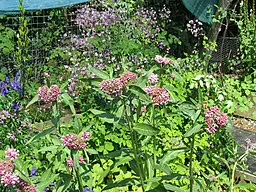
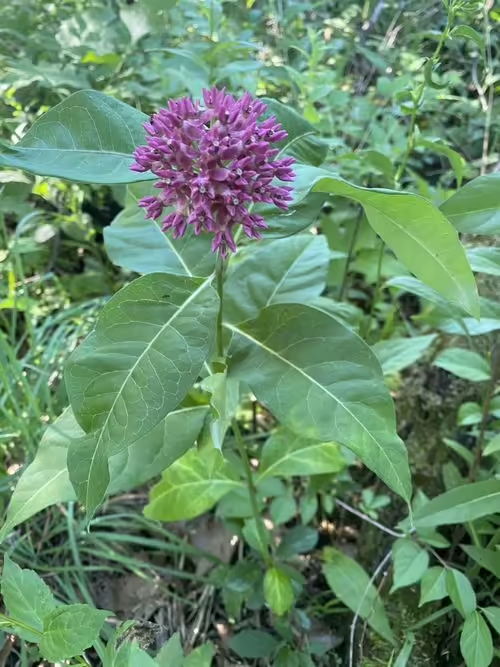
7. Showy Milkweed (Asclepias speciosa), a Milkweed for Medium to Dry Soils
Showy Milkweed (Asclepias speciosa): Showy milkweed is adventive to one county (Mackinac County) in the upper peninsula of Michigan (Kartesz 2015). Showy milkweed grows in open areas such as roadsides, fields, and woodlands that are mesic to dry. It has flowers that are purple to pink in color and bloom from April to June.
In your Michigan butterfly garden, showy milkweed is hardy in zones 3-9 and requires full sun and medium to well-drained soils. Seeds of showy milkweed can be purchased in the McMullen House Bed & Breakfast Garden Shop.



8. Sullivant’s Milkweed (Asclepias sullivantii), a Milkweed for Medium to Dry Soils
Sullivant’s Milkweed (Asclepias sullivantii): Sullivant’s milkweed is native and rare in the southeast and eastern parts of the lower peninsula of Michigan (Kartesz 2015). Sullivant’s milkweed grows in open areas with full sun such as prairies, meadows, roadsides, and railroads. In June and July the pink to purplish flowers come for your garden visitors to enjoy.
In your Michigan butterfly garden, this milkweed is hardy in zones 3-7 and requires full sun and medium to dry soils. Seeds of Sullivant’s milkweed can be purchased in the McMullen House Bed & Breakfast Garden Shop.



9. Common Milkweed (Asclepias syriaca), a Milkweed for all Conditions
Common Milkweed (Asclepias syriaca): Common milkweed is native throughout Michigan on both peninsulas (Kartesz 2015) and is found in open areas such as fields, pastures, and roadsides, where it can receive full sun. The flowers range from pink, greenish-purple, greenish-white, to white and bloom from June to August.
In your Michigan butterfly garden, this milkweed is hardy in zones 3-9 and grows in almost any exposure and soil condition, though it prefers full sun. Seeds of common milkweed can be purchased in the McMullen House Bed & Breakfast Garden Shop.
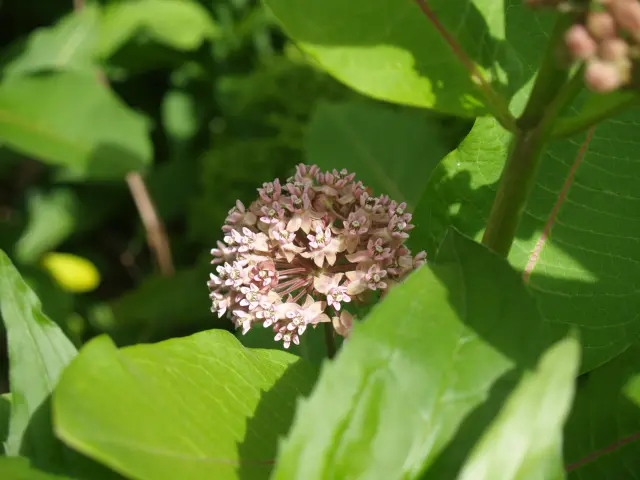

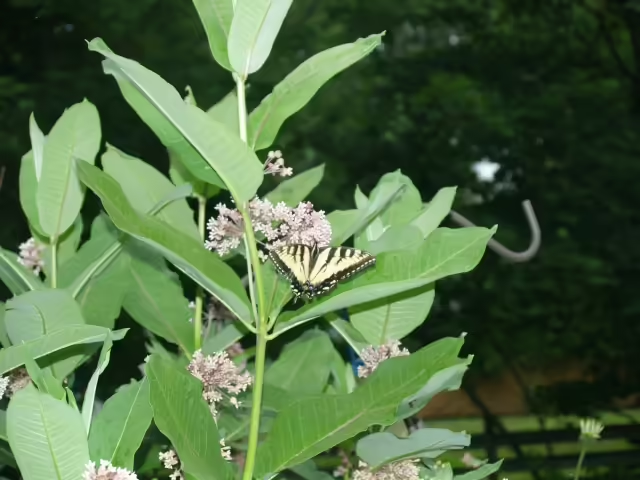
10. Butterfly Weed (Asclepias tuberosa), a Milkweed for all Conditions
Butterfly Weed (Asclepias tuberosa): Butterfly weed is one of the most common for butterfly gardeners on the east coast of the United States. Butterfly weed has three subspecies, two of which, subsp. interior and subsp. tuberosa occur in Michigan. Subspecies interior is located throughout the lower peninsula and one county in the upper peninsula. Subspecies tuberosa is located in one county (Kalamazoo County) in the lower peninsula. The flowers are characteristically orange and bloom throughout the summer and sometimes into the autumn. It grows in open areas with full sun such as fields, roadsides, and open woods.
In your Michigan butterfly garden, butterfly weed is hardy in zones 3-9 and grows in places of full sun with nearly any soil type. Seeds of butterfly weed can be purchased in the McMullen House Bed & Breakfast Garden Shop.
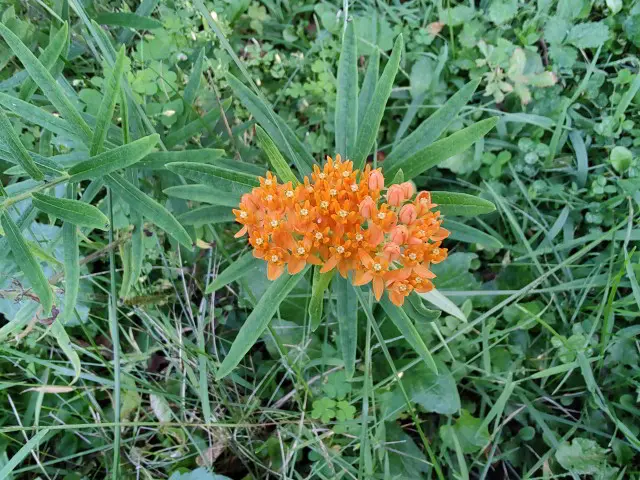
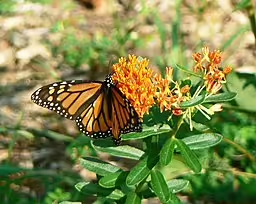

11. Whorled Milkweed (Asclepias verticillata), a Milkweed for Medium to Dry Soils
Whorled Milkweed (Asclepias verticillata): Whorled milkweed is native in scattered locations in the lower and upper peninsulas (Kartesz 2015). Whorled milkweed has green to white flowers that bloom from May to September. Like a lot of other milkweeds it grows in open areas such as meadows and fields, where it can take advantage of full sun.
In your Michigan butterfly garden, this milkweed is hardy in zones 3-9 and grows in full sun to part-shade and medium to dry soil. Seeds of whorled milkweed can be purchased at the McMullen House Bed & Breakfast Garden Shop.
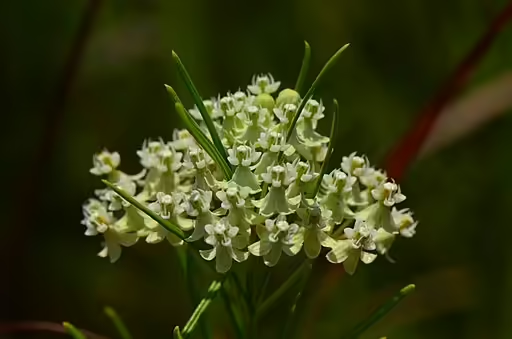
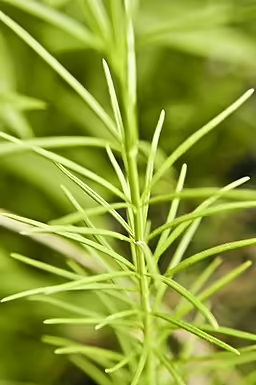
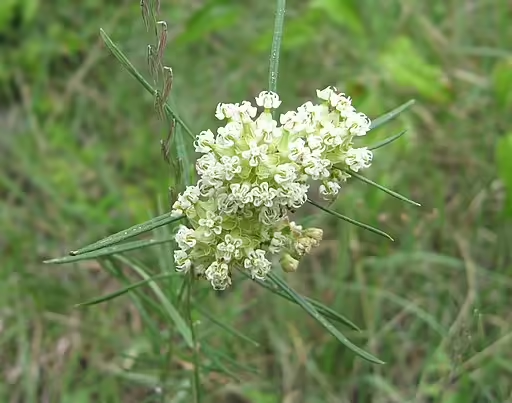
12. Green Comet Milkweed (Asclepias viridiflora), a Milkweed for Medium to Dry Soils
Green Comet Milkweed (Asclepias viridiflora): Green comet milkweed is native mostly to the south-central lower peninsula and scattered in the northwestern part of the lower peninsula of Michigan (Kartesz 2015). The flowers, which bloom from June to August, begin as a green color but age to become yellow with a purple tinge. The habitat includes open areas such as meadows and field where there is full sun.
In your Michigan butterfly garden, this milkweed is hardy in zones 3-9 and requires full sun to part-shade and medium to dry sandy soil. Seeds of green comet milkweed can be purchased at the McMullen House Bed & Breakfast Garden Shop.
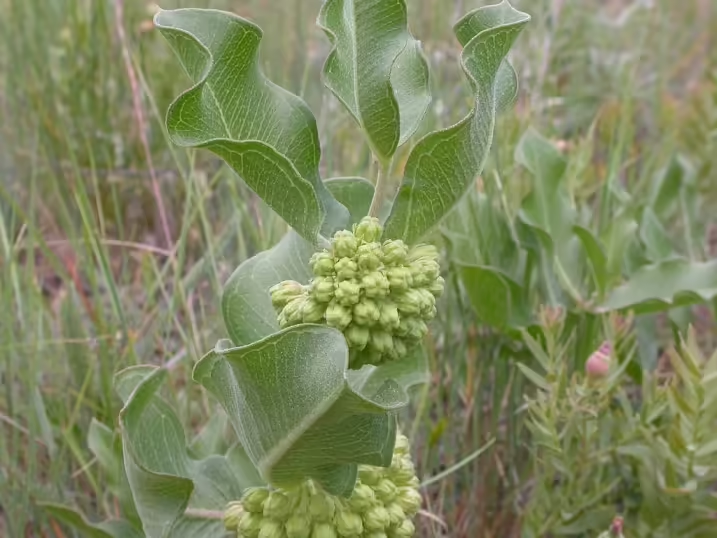

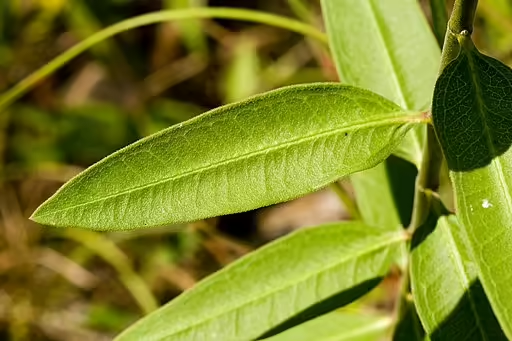
When selecting your Michigan milkweed, be sure to make sure that it grows in your zone and habitat.
References for Michigan Milkweeds
- Kartesz, J.T. The Biota of North America Program (BONAP). 2015. Taxonomic Data Center. Link to website. Chapel Hill, N.C. [maps generated from Kartesz, J.T. 2015. Floristic Synthesis of North America, Version 1.0. Biota of North America Program (BONAP). (in press)]